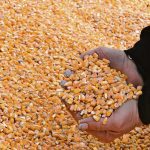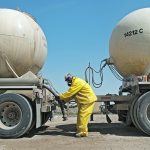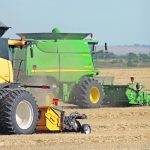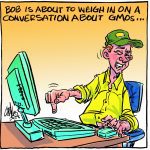Public discussion can be noisy and rancorous but there are many things on which most people agree – the need for clean air and water, a healthy environment and the ability to get a reasonable return from a marketplace that offers a level playing field for all. Getting to that level playing field for international […] Read more
Tag Archives greenhouse gas emissions

USDA to adjust GHG model
REUTERS — The U.S. Department of Agriculture will spend up to $400,000 to adjust a federal greenhouse gas emissions model to ensure that aviation fuel made from corn-based ethanol is eligible for hefty subsidies, Agriculture Secretary Tom Vilsack said. “We’re working on the modeling to make sure that there’s a broad array of feedstocks that […] Read more

Farmers can select for methane-efficient cows
World-first approach could reduce a herd’s methane emissions by 20-30 per cent by 2050, help meet industry’s GHG goals
A world-leading approach to creating a methane-specific breeding index has been developed by Lactanet. Not content to wait until “sniffer” technology for measuring bovine methane emissions eventually becomes more affordable, the Canadian dairy data collection and genetics analysis organization developed the index based on milk samples. “Canada will be the first country globally to offer […] Read more
Grasslands seen as answer
From 1990 to 2019, greenhouse gas emissions from Canadian agriculture went from 58 million tonnes of carbon dioxide to about 69 million tonnes. That’s an increase of 19 percent. Tim McAllister, an Agriculture Canada scientist in Lethbridge, says the 19 percent jump is mostly about grassland that’s now being used to grow crops. “When you […] Read more

Cargill chartered ship tests wind power at sea
LONDON, U.K. (Reuters) — A Cargill chartered dry bulk ship is on its first voyage since being fitted with special sails, aiming to study how harnessing wind power can cut emissions and energy use in the shipping sector. The maritime industry, which accounts for nearly three percent of global carbon dioxide emissions, is under pressure from investors […] Read more

China joins move to lab meat
CellX and others are part of a race globally to develop commercially viable lab-grown meat and fish products to appeal to consumers concerned about the environmental impact of livestock farming, a major source of greenhouse gas emissions.

Firm bets big on ammonia
(Reuters) — Without a single sales contract in hand, Dutch fertilizer company OCI is building a US$1 billion plant in Texas to produce ammonia with low greenhouse gas emissions, a gamble requiring heavy government subsidies, new markets and a contingency plan. OCI’s plant would be the world’s first new commercial facility to capture and sequester […] Read more

European farmer launches novel dribble bar innovation
Today, the preferred method of applying slurry to the ground is via low emission spreading equipment, such as dribble bars, slurry injection or trailing shoe.

Making a case for the cow-calf sector
Unfortunately, the cow-calf sector is viewed as a significant source of greenhouse gases by some. Ill-informed journalists, academics and politicians cite fossil fuel use, fertilization, enteric emissions and agricultural wastes as reasons to phase out the beef production industry and adopt alternative diets.

Ag biotech helps with climate change
The integration of modern seed genetics, inputs and technologies highlights how food production is a highly technical system, requiring all three to be efficient and cost-effective.






